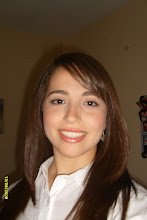Over the last ten years rather surprising things have come to be called sculpture: narrow corridors with TV monitors at the ends; large photographs documenting country hikes; mirrors placed at strange angles in ordinary rooms; temporary lines cut into the floor of the desert.
The categories of sculpture and painting have been stretched and twisted, these cultural terms can be extended to include just about anything. This new ideology transmits the message of historicism. The art is made comfortable by being made familiar, since it is seen as having gradually evolved from the forms of the past.

Alice Aycock. Maze. 1972
It did not matter that constructivist forms were intended as visual proof of the absolute logic and coherence of universal geometries, while their seeming counterparts in minimalism were denoting a universe held together not by Mind but by wires, or glue, or the accidents of gravity. The rage to historicize simply swept these differences aside.
With the passing of time these sweeping operations got a little harder to perform. After some time the sculpture began to be piles of thread waste on the floor, or sawed redwood timbers rolled into the gallery, or tons of earth excavated from the desert, or stockades of logs surrounded by fire pits, the sculpture became harder.
The category "sculpture" has now been forced to cover different aspects that it is, itself, in danger of collapsing. The logic of sculpture, it would seem, is inseparable from the logic of the monument. By virtue of this logic a sculpture is a commemorative representation. It sits in a particular place and speaks in a symbolical tongue about the meaning or use of that place.
They thus function in relation to the logic of representation and marking, sculptures are normally figurative and vertical, their pedestals an important part. But the convention is not immutable and there came a time when the logic began to fail.

Richard Serra. 5:30. 1969.
There were two projects that marked:
The first were commissioned of the doors to a projected museum of decorative arts and the second was commissioned of a memorial to literary genius to be set up at a specific site in Paris.
With these projects, one crosses the threshold of the logic of the monument, entering the space of what could be called its negative condition-a kind of sitelessness, or homelessness, an absolute loss of place.
In this sense sculpture had entered the full condition of its inverse logic and had become pure negativity: the combination of exclusions. Sculpture, it could be the category that resulted from the addition of the not-landscape to the not-architecture.
Sculptors' attention, at the end of the 1960s, began to focus on the outer limits of those terms of exclusion. The not-architecture is, according to the logic of a certain kind of expansion, just another way of expressing the term landscape, and the not-landscape is, simply, architecture.
Labyrinths and mazes are both landscape and architecture; Japanese gardens are both landscape and architecture. They were part of a universe or cultural space in which sculpture was simply another part-not somehow, as our historicist minds would have it, the same. Their purpose and pleasure is exactly that they are opposite and different.

In the diagram of the not-architecture, not-landscape expanded field there are three other categories that one can envision (between landscape and architecture is site-construction, between landscape and not-landscape is marked sites, and between architecture and not-architecture is axiomatic structures), all of them a condition of the field itself, and none of them assimilable to sculpture (which is, as it has been said, between not-landscape and not-architecture).
To think of an expanded field was felt by a number of artist at the same time (1968-1970). Robert Morris, Robert Smithson, Michael Heizer, Walter de Maria, Robert Irwin, Sol Le Witt, Bruce Nauman had entered a logical conditions that can no longer be described has modernist. So the term used for this was Postmodernism.
Similarly the combination of using landscape and not-landscape began in 1960 and the term marked sites its used to identify work like Smithson’s spiral jetty and Heizer’s double negative ect and refers to the art of making.

Robert Smithson. Displacements, Yucatan. 1969.
The artist also explore the architecture plus not-architecture these is some kind of intervention into the architecture; some of the artist are Robert Morris, Robert Irwin, Sol Le Witt, Bruce Nauman, Richard Serra and Christo.
The expanded field that characterizes this theme of postmodernism has two features, one that has to do with the practice of the artist and the other with the medium. Postmodernism gives both for and expanded and finite set of related positions for an artist to occupy and explore and does not condition the medium that you have to use.
































